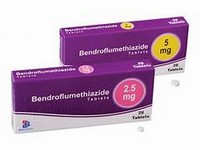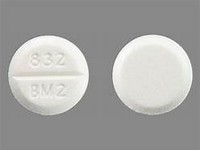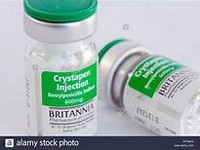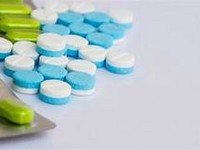Fluvoxamine maleate

Fluvoxamine maleate
CLINICAL USE
SSRI antidepressant:Depression Obsessive compulsive disorder
DOSE IN NORMAL RENAL FUNCTION
50–300 mg daily (doses over 150 mg in divided doses)Depression: usual maintenance dose 100 mg dailyObsessive compulsive disorder: usual maintenance dose 100–300 mg daily
PHARMACOKINETICS
Molecular weight :434.4 %Protein binding :80 %Excreted unchanged in urine : 2 Volume of distribution (L/kg) :25half-life – normal/ESRD (hrs) :13–15/Unchanged DOSE IN RENAL IMPAIRMENT
GFR (mL/MIN)
30–50 Dose as in normal renal function10–30 Dose as in normal renal function <10 : Dose as in normal renal function but titrate slowly DOSE IN PATIENTS UNDERGOING RENAL REPLACEMENT THERAPIES
CAPD :Not dialysed. Dose as in GFR <10 mL/min HD :Not dialysed. Dose as in GFR <10 mL/min HDF/high flux :Not dialysed. Dose as in GFR <10 mL/minCAV/VVHD :Unknown dialysability. Dose as in normal renal function IMPORTANT DRUG INTERACTIONS
Potentially hazardous interactions with other drugsAnalgesics: increased risk of bleeding with aspirin and NSAIDs; possibly increased concentration of methadone; increased risk of CNS toxicity with tramadolAnti-arrhythmics: increased risk of toxicity with mexiletineAnticoagulants: effect of coumarins possibly enhancedAntidepressants: avoid concomitant use with reboxetine, MAOIs, moclobemide and St John’s wort; possibly enhanced serotonergic effects with duloxetine, fluvoxamine inhibits metabolism of duloxetine – avoid concomitant use; can increase tricyclics concentration; increased agitation and nausea with tryptophanAnti-epileptics: antagonise anticonvulsant threshold; concentration of carbamazepine and phenytoin increasedAntimalarials: avoid concomitant use with artemether/lumefantrineAntipsychotics: plasma concentration of clozapine and olanzapine increasedAntivirals: plasma concentration possibly increased by ritonavirCiclosporin: may increase ciclosporin concentrationDopaminergics: increased risk of CNS toxicity with rasagiline; hypertension and CNS excitation with selegiline – avoid concomitant use5HT 1 agonist: risk of CNS toxicity increased with sumatriptan; possibly increased risk of serotonergic effects with frovatriptan; inhibits metabolism of frovatriptan; possibly inhibits metabolism of zolmitriptan – reduce zolmitriptan doseLinezolid: use with care, possibly increased risk of side effects Lithium: increased risk of CNS effects – monitor levelsSibutramine: increased risk of CNS toxicity – avoid concomitant useTheophylline: increased theophylline concentrations – avoid concomitant use; if not possible, halve theophylline dose and monitor levels ADMINISTRATION
Reconstition
– Route
Oral Rate of Administration
–Comments
See how to identify renal failure stages according to GFR calculation
See how to diagnose irreversible renal disease
Home









